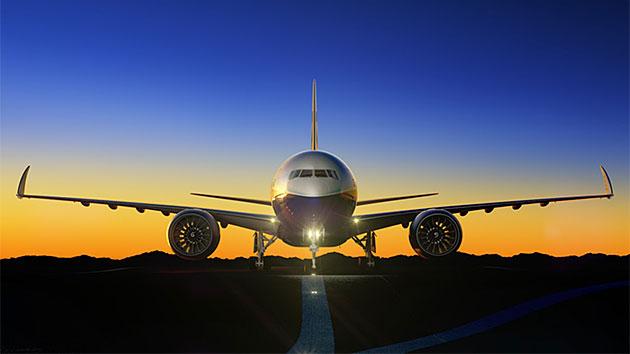最终,波音公司的成功合作模式终结了吗? | Finally, The End Of Boeing’s Partnering For Success?

在过去10年的后半段时间里,波音公司正在与主要的商用航空领域供应商签署新的合作协议。新的协议使波音可以用更低的价格从供应商采购部件,从而实现“成功合作伙伴”(PFS)计划。
In the latter part of the last decade, Boeing was busy signing new master contract agreements with major commercial aerospace suppliers that solidified price reductions and other benefits to the OEM under its Partnering for Success (PFS) program.
尽管这样协议的达成需要波音和供应商双方同意,但波音始终占据谈判的上网,因为他们是垄断巨头,具有更大的发言权。而且这些新协议的达成是未来波音“新中型飞机”(NMA)上市的必要条件。
While it takes two sides to reach such agreements, Boeing always held the upper hand because it was the leading member of the airliner duopoly, and signing the multiyear deals was a necessary requirement for later consideration to gain work under Boeing’s New Midsize Aircraft (NMA).
当然,现在NMA计划已经不复存在,波音737 MAX正在努力摆脱停飞并恢复生产线,而波音787和波音777正向着大幅削减产能的方向努力。
Of course, now the NMA is no more, the workhorse 737 MAX is struggling to return to service and see production revived, and the 787 and 777 widebodies are headed for sharper monthly manufacturing cuts.
更重要的是,波音公司的新领导人正在试图纠正一种内部文化,这种文化在一定程度上优先考虑了企业的短期利润而不是长期收益。
What is more, new Boeing leaders are trying to fix an internal culture that in part prioritized shorter-term profit making at longer-term expense.
在最近接受《航空周刊》采访时,波音公司CEO戴维·卡尔霍恩(David Calhoun)被问及波音是否会“放宽”对供应商的成本要求,他表示“是的,而且我认为多年以来PFS项目可能存在一定的误区。“
When asked in a recent interview with Aviation Week whether Boeing would be “easing up” on suppliers, CEO David Calhoun answered, “Yes. I think Partnering for Success may have gotten misinterpreted over the course of the years.”
那么,新形势下是否意味着PFS协议的终结,看到市场又能回到供应商一方了吗?可能不会,或者至少没有那么多的效益会回到供应商。但这可能意味着主制造商与挺过疫情的供应商之间的关系重新获得考虑。
So, will the new landscape mean the end of PFS and see power shift back to suppliers? Probably not, or at least not so much in favor of suppliers. But it likely will mean an overdue leveling out between the OEM and its surviving providers.
可以肯定的是,波音有12000家供应商,他们都希望看到PFS计划被取消,而且行业顾问认为PFS的取消对于商业和公共关系方面都有意义。AeroDynamic Advisory的专家凯文·迈克尔斯(Kevin Michaels)说:“恢复波音供应商的信心无非是波音中止PFS计划,现在的时机对于这项行动是完美的。”
For sure, practically every one of the current 12,000 or so Boeing Commercial Airplanes suppliers would like to see PFS formally killed, and industry consultants suggest it makes both business and public-relations sense. “Nothing would do more to restore supplier confidence than Boeing burying PFS,” said Kevin Michaels, MD of AeroDynamic Advisory. “The timing is perfect.”
一位行业分析师告诉《航空周刊》,PFS计划在波音供应链管理中已变得根深蒂固,以至于虽然疫情危机在波音737MAX停产后逐步展开,但波音仍在向一些供应商施加更紧缩的合同条款。
PFS has become so ingrained in Boeing supply chain management that even as the COVID-19 crisis was unfolding on the heels of the MAX production halt, the OEM still was pressing some suppliers for tighter contracting terms, one industry analyst told Aviation Week.
但是根据迈克尔斯和其他人的说法,PFS计划的后果早晚会影响到波音。他表示:“波音现在65%~70%的成本都用在供应商上面,而如果PFS计划使供应商无法获得足够的利润率,那供应商将无法维持,也影响了他们的投资能力。”
But according to Michaels and others, the consequences of PFS were going to catch up with Boeing sooner or later. “It puts its suppliers—responsible for 65-70% of its cost structure—in the untenable position of earning inadequate profit margins, which reduces their ability to invest in the future,” Michaels said.
尽管如此,即使波音领导人以某种方式宣布结束PFS计划的可行性,但该计划也不太可能完全消失。首先,许多顾问承认波音有继续向供应商施加压力的权利,有权要求供应商按时按预算交付,这是一直以来困扰供应链的问题,直到波音737MAX停飞。
Still, even if Boeing leaders declare the end of PFS somehow, it is unlikely to totally disappear. For starters, many consultants acknowledge Boeing is right to continue to pressure providers to deliver on time and on budget—an issue that dogged the supply chain right up to the MAX’s grounding.
还有一些长期趋势可能会在疫情后流行起来,例如飞机制造商现在呼吁顶级供应商在设计子系统时承担更多的成本和风险。近年来,飞机制造商还采用了更多的内包和垂直整合措施,以利用客机在全生命周期中产生的利润。由于空客最近从发动机短舱制造工作中撤出,其内包可能会因现金紧缺而暂停,但由于工业整合激增以及知识产权的争夺,生产内包可能会在以后的时间里再次提速。
Then there are longer-term trends that that may only accelerate post-pandemic. Aircraft OEMs are calling on top suppliers to assume more cost and risk in designing subsystems. In recent years, OEMs also have embraced more insourcing and vertical integration to gain leverage over profits that emanate from an airliner across its lifecycle. Insourcing may pause in response to immediate cash constraints, as exemplified by Airbus’s recent step back from engine nacelle work, but it may rev up again later due to a surge in industrial consolidation, as well as the scramble to lock up intellectual property rights.
而对于供应商而言,目前最重要的是其长期前景已经从产能不足转为产能过剩(至少在中期是这样,甚至可能未来长期如此)。波音首席财务官格雷格·史密斯(Greg Smith)在8月5日举行的Jefferies投资者会议上指出:“在波音737MAX方面的零件库存充足,因此未来首先需要消耗掉这些库存。”
Above all for the supplier base, the long-term outlook has changed from not enough capacity to meet projected demand, to too much—certainly in the midterm, and maybe forever. “With regards to inventory, and particularly on the MAX, as you know there’s plenty of supply chain inventory out there,” Boeing CFO Greg Smith noted during the Jefferies investor conference Aug. 5. “So that will not be a constraint as we come up. It will be burning off that inventory.”
最近几个月,许多行业顾问评论说,随着整个行业努力克服其历史上最大的衰退,他们希望飞机主制造商拥有更多的回旋余地。 虽然时间将证明各方是否可以学会互惠互利,但无可争议的是,主制造商和供应商现在比以往任何时候都更加需要彼此。
Many industry advisors have commented in recent months that they expect more leeway from OEMs as the whole industry fights to work through the greatest downturn in its history. Time will tell if all sides can learn to be more mutually beneficial, but what is not in dispute is that both OEMs and suppliers need each other now more than ever.
这条消息是Michael Bruno在Aviation Daily发表的文章。《Aviation Daily》为关注商业航空的高管提供真知灼见。每天获取航空公司和机场策略、主要航空公司的数据快照、票价数据以及国际覆盖率。点击此处查看有关Aviation Daily更多消息。